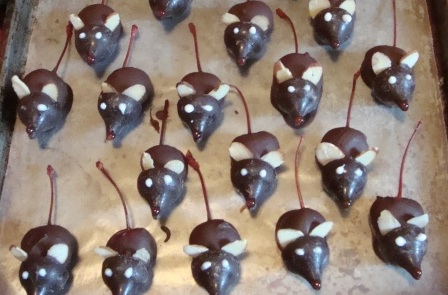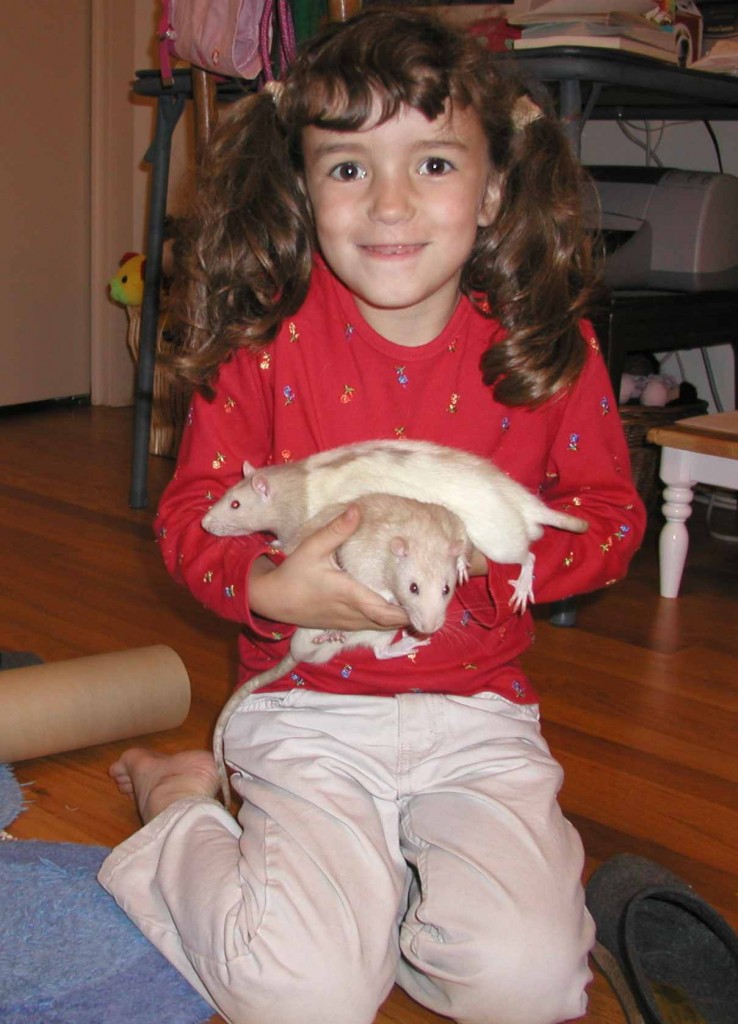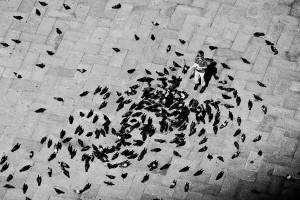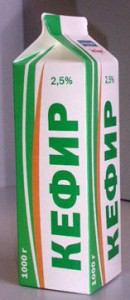To celebrate the completion of some pretty terrific research on domestication we planned an end-of-term food fest to honor the animals we have studied over the course of the semester. The crew assembled here is ready to dive into a smorgasbord of food for, derived from, or inspired by the domesticates they researched and wrote about this semester. The projects – which focus on the Honeybee, Goldfish, Pigeon, Chicken, Cat, Donkey, Horse and Reindeer,are available from the research project menu on the main blog page.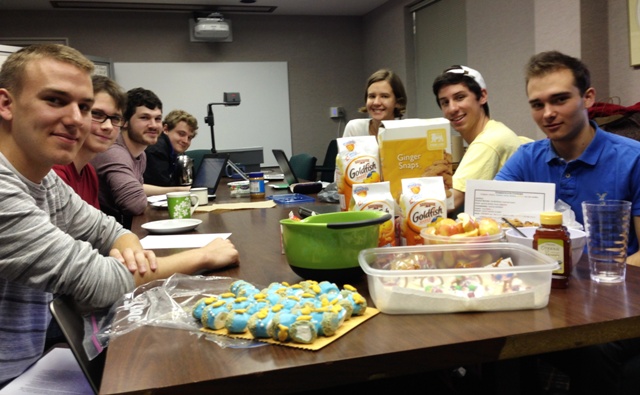
The Menu: Earl Grey tea with honey represented Bill’s fine study of the honeybee. Horses would have had stiff competition from us for the apples and caramel dipping sauce Camilla brought. Alex paid homage to the donkey with ginger snaps (because watermelon is not in season), while Connor prepared a bowl of delicious fresh berries and gummy worms as pigeon food. Chris also played with the symbolic, bringing goldfish crackers and milk to represent the house cat. My own approach to this assignment was synthetic. I tried to include something for everybody in the “Domesticate Cookies” I made.
Ben and Casey took the creative route, crafting reindeer cookies and goldfish marshmallows that would be the envy of any domestic god or goddess.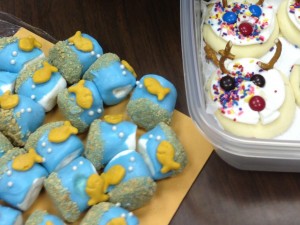
And then it was time for awards! (I’m very sorry I didn’t get photos of the winners modeling their prizes). The finalists for “Best Video Featured on a Research Project Blog” were: 1) “Which Came First, the chicken or the Egg?” 2) George Carlin on Cats and 3) The Amazing Trick Goldfish. Scroll all the way down on the goldfish page to find the winner, also pictured here with his culinary handiwork.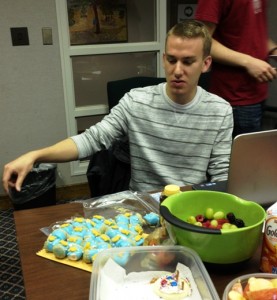
The finalists for “Best Poem Featured in a Research Project Blog” were: 1) An ancient Egyptian Ode to embryos (and eggs?) 2) A honey-themed excerpt from the Illiad and 3) “Cher Ami,” a poem written to commemorate the feats of a pigeon hero of the First World War. Following enthusiastic dramatic readings of all three entries, Cher Ami emerged as the winner of this coveted award.
A discussion ensued over the Best Overall Research Project Design, and while there were many good candidates, the group quickly settled on a winner.
The prize goes to….drum roll, please…….THE CHICKEN!!!! With deep appreciation of your contribution to the class this whole semester, your insistence that we always keep an eye on our moral compass, and your uncanny ability to raise the bar for all of us, Erica, we want you to come claim your prize, please.




